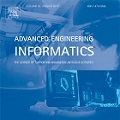It is widely believed that the low frequency quasi-periodic X-ray oscillations observed in microquasars are correlated to, but do not originate at, the physical radius of the inner edge of the accretion disk. Models relating the QPO frequency and color radius are hindered by observations showing contradicting trend correlations between the microquasars GRO 1655-40, XTE J1550-564 and GRS 1915+105. The first shows a negative correlation and the latter two a positive one. By taking into account relativistic rotation in the accretion disk, the Accretion-Ejection Instability (AEI) model predicts a turnover in the frequency-radius relationship, and has been successfully compared with observations of GRO J1655-40 and GRS 1915+105. We present further evidence supporting the AEI model prediction by using observations of the microquasar GRS 1915+105. By combining a data set including $\theta$-, $\beta$- and $\alpha$-class X-ray light curves, we observe positive, negative and null correlations in the frequency-radius relationship. This is the first time a single source has shown a possible inversion in the QPO frequency-color radius curve predicted by the AEI model.
翻译:人们广泛认为,微夸沙中观察到的低频率半周期半X射线振动与倾角磁盘内边缘的物理半径相关,但并非源于其物理半径,与QPO频率和彩色半径有关的模型受到阻碍,因为观测显示微夸萨GRO 1655-40、XTE J150-564和GRS 1915+105之间存在相互矛盾的趋势相关性。第一个观测显示负相关,而后两个观测显示正相关。考虑到弧磁盘中的相对旋转,倾角射射射线模型预测频率-射线关系中的周期性变化,并与GRO J155-40和GRS 1915+105的观测结果进行了成功比较。我们利用对微夸萨GRS 1915+105的观测,进一步提出证据支持AEI模型的预测。通过将一套数据集(包括$-、$\beta$-和$\alpha$-l-rain X光线模型)预测,我们在A-radar光曲线中首次观测了正态、正态和直径轨道上显示的A-正态频率。





